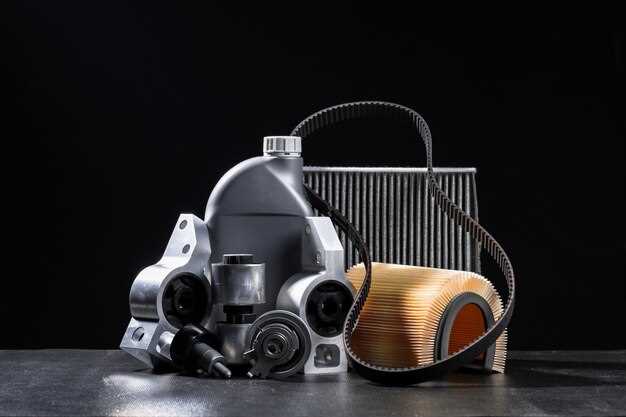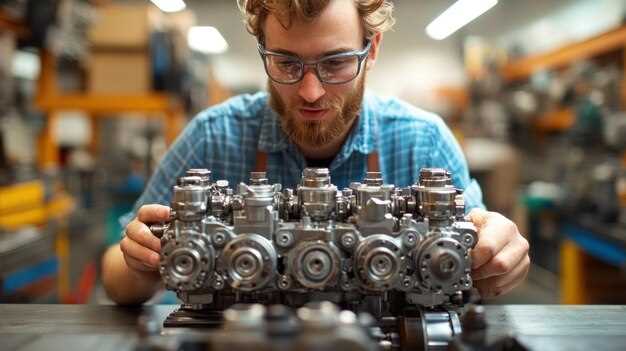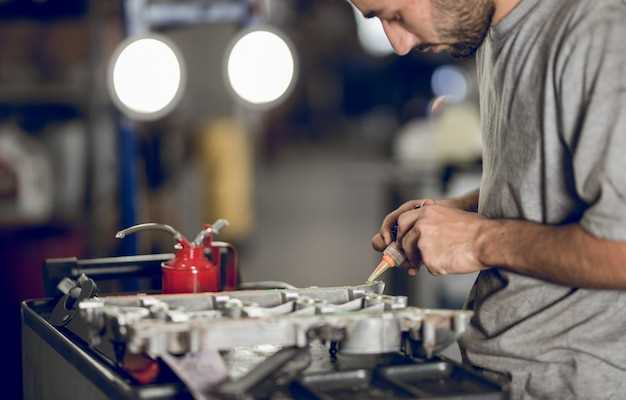
Understanding the intricacies of your vehicle’s engine is essential for any car owner. Knowledge of the various parts that make up an engine can empower you to make informed decisions regarding maintenance and repairs. Not only does this knowledge enhance your ability to communicate effectively with mechanics, but it also helps you identify potential issues before they escalate into costly problems.
Each component of the engine plays a crucial role in its overall performance and efficiency. From the cylinder head to the piston, every part functions in harmony to ensure your car runs smoothly. Familiarizing yourself with these essential engine components can save you both time and money, making it a worthwhile investment in your automotive education.
In this article, we will explore the key engine components that every car owner should know. By the end, you will have a better understanding of how these parts work together, as well as tips for maintaining your engine in optimal condition. Whether you are a new car owner or looking to deepen your automotive knowledge, this guide will provide valuable insights into the heart of your vehicle.
Understanding the Role of the Cylinder Head in Engine Performance

The cylinder head is a critical component of an internal combustion engine, influencing its overall performance and efficiency. Situated on top of the engine block, it plays a vital role in sealing the combustion chamber, where fuel and air mix and ignite to generate power. Understanding its function requires basic knowledge of engine mechanics.
One of the cylinder head’s primary roles is to house the intake and exhaust valves. These valves regulate the flow of air-fuel mixture into the combustion chamber and allow exhaust gases to exit after combustion. The precise timing and opening of these valves are crucial for optimizing engine performance. Any malfunction can lead to reduced power output and increased emissions.
Additionally, the cylinder head contains passages for coolant, which regulates engine temperature. Overheating can severely damage the engine, so effective heat dissipation through the cylinder head is essential for maintaining reliability and longevity. The design of the cylinder head influences how well the engine breathes, impacting its efficiency and power delivery.
Furthermore, the cylinder head contributes to the engine’s compression ratio, an important factor in determining how effectively an engine converts fuel into power. A higher compression ratio generally results in improved performance but requires higher-octane fuel to avoid knocking.
In summary, the cylinder head is integral to engine performance. Its design and functionality directly affect power output, efficiency, and engine longevity. A solid understanding of these aspects can empower car owners to make informed decisions regarding maintenance and upgrades.
How the Oil Pump Maintains Engine Lubrication and Health
The oil pump is a crucial component of the engine, responsible for circulating oil throughout its parts to ensure optimal lubrication and function. Understanding how the oil pump works can significantly enhance a car owner’s knowledge of engine maintenance and health.
Here are the primary functions and importance of the oil pump:
- Circulation of Oil: The oil pump draws oil from the oil pan and pushes it through the engine components, including the crankshaft, camshaft, and other moving parts.
- Lubrication: By distributing oil, the pump reduces friction between moving parts, which minimizes wear and tear and prolongs engine life.
- Cooling: The flow of oil also helps to dissipate heat generated by the engine, contributing to overall engine temperature regulation.
- Cleansing: As oil circulates, it helps to pick up dirt, metal shavings, and other contaminants, which are then filtered out, ensuring a cleaner engine environment.
The oil pump operates in two main types:
- Gear Pumps: These pumps use gears to generate flow and maintain pressure. They are common in many modern engines due to their efficiency.
- Rotary Vane Pumps: These pumps use a rotating mechanism to create a vacuum and pump oil. They are often found in older or specialized engines.
Regular maintenance of the oil pump is essential for engine health. Car owners should:
- Check oil levels regularly and replace oil as per manufacturer recommendations.
- Listen for unusual noises that might indicate a failing oil pump.
- Monitor oil pressure via the dashboard gauge; low pressure could indicate pump issues.
In conclusion, the oil pump plays a vital role in maintaining engine lubrication and health. Being aware of its functions and maintaining it properly can lead to a more efficient and longer-lasting engine.
The Functionality of the Timing Belt and Its Impact on Engine Timing

The timing belt is a crucial component in an internal combustion engine, responsible for synchronizing the rotation of the crankshaft and the camshaft. This synchronization is essential for ensuring that the engine’s valves open and close at the correct times during each cylinder’s intake and exhaust strokes. Without proper timing, the engine cannot operate efficiently, leading to potential damage and performance issues.
Knowledge of the timing belt’s function is vital for car owners. It not only helps in understanding the overall operation of the engine but also stresses the importance of regular maintenance. Unlike other parts of the engine, the timing belt is made of rubber and is subject to wear over time. If it fails, the consequences can be severe, including catastrophic engine failure, which may require extensive repairs.
The timing belt generally has a recommended replacement interval, which varies by manufacturer but typically falls between 60,000 to 100,000 miles. Adhering to this schedule is crucial to avoid the risk of belt breakage. A broken timing belt can lead to the pistons striking the valves, causing significant engine damage and necessitating costly repairs or even engine replacement.
In summary, understanding the functionality of the timing belt and its impact on engine timing not only enhances a car owner’s knowledge but also highlights the importance of this vital part for engine longevity and performance. Regular inspection and maintenance can prevent unexpected failures and ensure the smooth operation of the vehicle.
